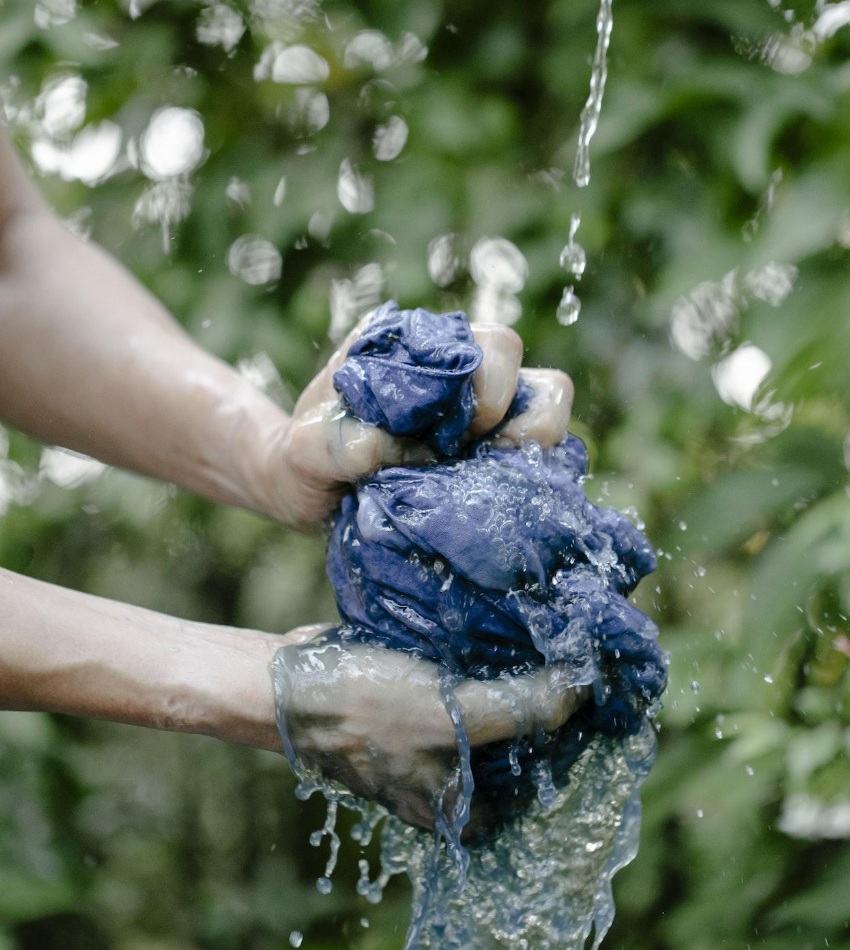The Environmental and Ethical Benefits of Hemp Textiles

A brief documentation written by PHD student Flaminia Pischedda from Oxford University on hemp and the sustainable textile industry.
H(E.E.)MP[..] Forbidden are setting fire to fields or forests (14), cutting down trees or picking flowers without reason (18-19), polluting water (36), destructively excavating the earth or river banks (47), draining rivers or marshes (53).The 180 Precepts of Lord Lao, 350 ADAfter only four months 2019 is already revealing to be a pivotal year for the fight against climate change. In the UN Intergovernmental Panel on Climate Change (IPCC)’s landmark report, world’s leading climate scientists urge us to undertake radical and unprecedented changes if we really want to reach the target of limit global warming rises to 1.5C.[1]We tend to consider to the oil industry and air pollution as the major influential factors related to climate change and global warming; however, if we are aiming to tackle the climate change issue from a larger perspective, plastic pollution (macro-plastic and micro-plastic), watershed contamination and energy consumption must also been considered. In this regard, fashion industry plays an important role for it is the second most pollutant industry in the world.[2] The so-called Fast Fashion businesses encourage people to buy more and more often. Over the last decade, fashion products have become so accessible that “between 2000 and 2014 the amount of garments purchased by the average person increased by 60%”.[3] Fast Fashion is unsustainable and problematic on at least two different levels: environmental and ethical.[4]
Environmental
Today’s garments are made of either natural (cotton, linen, silk, etc.) or synthetic fabrics made of petroleum based chemicals such as nylon, polyester and polypropylene. Synthetic fabrics production, on the hand, has a lower carbon and water footprint than natural textiles. Nevertheless, they are problematic insofar as they release a significant amount of micro-plastic every time we wash a garment using a washing machine. Of the natural fibres, cotton is currently the most important in the fashion industry, accounting for about 36% of worldwide apparel production. Cotton Water Footprint (WF) is extremely high, around 10.000 m3/pz, needs pesticides to grow properly and cotton crops are produced in developing countries where there are hazardous labour conditions.
Ethical-Social
Most of the low-cost brands and luxury brands have dislocated their factories to reduce the cost of the supply chain. As a result, they moved to some developing countries (Bangladesh, Turkey, China, India, etc.) where labour conditions in terms of employees’ security, health and rights are extremely poor or even utterly nonexistent. Workers are forced to accept low wages, flexible contracts (or no contracts), and sweatshop conditions, as well as long working hours, exposure to pesticides, and they are often paid below the minimum wage. Most importantly, in such countries child labour is still rife.[5] A recent report estimates that nowadays over “170 million children are engaged in, or 11% of the global population of children”, and that “many of these child labourers work within the fashion supply chain, making the textiles and garments to satisfy the demand of consumers in Europe, the US, and beyond”.[6] Recently, some “companies are implementing traceability management systems, training and capacity building teams, and joint long-term planning programmes to improve Supply Chain (SC) performance”.[7]A solution to all these issues could be Hemp, or Industrial Hemp (IH). IH is a variety of the Cannabis sativa, an annual and fast growing plant originated in Central Asia. Cannabis belongs to the family of Cannabacae, it differs from Marijuana and Hashish for its relatively low amount of tetrahydrocannabinol (THC), the psychoactive compound.[8]Cannabis is a highly “remarkable and multi-purpose genus”, and “its plant can produce strong fibres, edible seeds and medicines”. Archaeobotanical evidence dating back from the 8000 to 3000 BCE have been retrieved in the last century and proved that cannabis was widely grown since ancient times in many part of Euroasia,[9] whilst the earliest historical account is to be found in the Book of Odes (Shijing 詩經, ca. XI – VII centuries BCE) Chinese’s first collection of poetry. Each part of the plant have been utilised to create clothing fabric, paper, rope, canvas and any kind of textile product; moreover, it was used for religious rituals, nutrition and medicines. Recent studies have proven that Hemp was one of the earliest plant to be widely grown by ancient Euro-asian civilisation due to its high “versatility as multiple resource”.[10] With the advent of prohibitionism in the 1920s, production for hemp as been dramatically reduced. In the last few years, given the general concern about environmental issues, hemp finally made his comeback. Today hemp is grown for use in “a wide range of products, including foods and beverages, personal care products, nutritional supplements, fabrics and textiles, paper, construction materials, and other manufactured and industrial goods”.[11]Regarding the fashion industry, Hemp is considered probably the most sustainable fabric for the following reasons:• Softer, warmer, more water resistant and more durable than most of the other natural fabrics.• Produces 250% more fibre than cotton and 600% more fibre than flax on the same land and has the highest yield per acre of any natural fibre (1 acre of usable hemp is equal to 2 acres of cotton).[12]• Does not requires pests.• Has a low water footprint.[13]• Renewable fibre, grows extremely quickly in a variety of climates.• Use for soil replenishing.[14]
References[1]https://www.ipcc.ch/reports/[2]https://www.ellenmacarthurfoundation.org/assets/downloads/publications/A-New-Textiles-Economy_Full-Report_Updated_1-12-17.pdf[3]https://www.mindfood.com/article/the-real-cost-of-fast-fashion/[4]Boström, Magnus, Michele Micheletti, and Peter Oosterveer. 2019. The Oxford handbook of political consumerism. New York, NY : Oxford University Press[5]Watch the trailer of The True Cost here: https://truecostmovie.com/ ; See also https://vimeo.com/92051570[6]https://labs.theguardian.com/unicef-child-labour/,http://www.ilo.org/wcmsp5/groups/public/---ed_norm/ipec/documents/publication/wcms_221513.pdf[7]https://www.sciencedirect.com/science/article/pii/S0925527319301185[8]https://www.britannica.com/plant/hemp[9]Robert C. Clarke, Mark D. Merlin. 2013. Cannabis: Evolution and Ethnobotany. Berkley: University of California press. See also: Richard Rudgley The Lost Civilizations of the Stone Age Di[10]Clarke, Merlin 2013.[11]https://fas.org/sgp/crs/misc/R44742.pdf[12]https://cfda.com/resources/materials/detail/hemp[13]https://essay.utwente.nl/68219/1/Averink,%20J.%200198501%20openbaar.pdf fbclid=IwAR18HrJXvsMHgaYImXHoVfFyDgyLJZEJl08Xg9iKb0bOzKDJ8MUBYw0J6Vk[14]https://ministryofhemp.com/blog/hemp-soil-remediation/ ; https://www.researchgate.net/publication/223553316_Industrial_Hemp_Cannabis_sativa_L_Growing_on_Heavy_Metal_Contaminated_Soil_Fibre_Quality_and_Phytoremediation_Potential/stats
Edit this block to edit the article content or add new blocks...
Post a comment